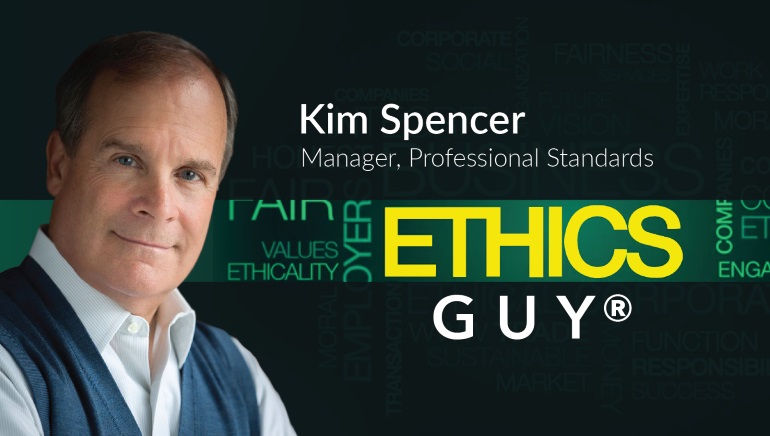Ethics Guy®: Where does advertising live?

It’s an odd question, and one I’ve been pondering. I think advertising in real estate lives in a subjective grey area, somewhere between the truth and a fib. I could have said “lie” instead of “fib,” but if a lie were involved, a very definite line would be crossed, namely the REALTOR® Code and the Rules of Cooperation.
I don’t think any of us wants to be party to an outright lie. But, when we’re drafting an ad, we want to put our (or a property’s) best foot forward. How else do we explain the photographs of ourselves adorning our ads and websites? I mean, when we meet a colleague, occasionally the image doesn’t quite match the reality. It’s a kindness not to point out we’re all getting older, and I think it’s generally accepted for picture-taking sessions that it’s okay to spend time in the boudoir before going to the studio and, once there, to get the lighting just right while making sure the photographer captures our best side.
I’m guilty of all of this. I see myself as being younger than my chronological age. It helps that as we get older our eyesight often deteriorates, somewhat obliterating from the mirror the ravages of time. If I were to be brutally candid with myself, I’d recognize that I’m beginning to look uncomfortably close to how my father looked in his later years. Having him stare back at me is a shock, so why not over wash that reflection with one of my own making?
Ditto for the properties we list. We’re not being hired to only tell the truth. We’re being hired to present an image of what it would be like to live there and to make the property look its best. Sometimes this takes a bit of strategic staging or getting the photograph angle and light just right. Amid all the advertising clutter, we have to do something to make the subject of our ad stand out. For some of us and the properties we list, that means taking flattering pictures.
Getting our ad noticed may also require we use a bit of artistic licence to paint that all-important picture of what the place is really like. For example, think of a cottage barely big enough for Snow White and her seven pals. Heaven forbid we tell the unvarnished truth by saying, “Perfect for one person; it’s just 495 square feet.” Our clients hire us to get a result by convincing buyers to beat a path to the front door. So why not say, “Cute and larger than it looks,” or something similar.
That’s what I mean by saying that advertising lives in real estate between the truth and a fib. We all know advertising contains embellishments. (Look up “puffery in advertising” if you want to know more.) But what isn’t okay is to cross the line from a fib to a misrepresentation by fabricating facts or making outright false statements. Doing so would be a potential breach of the REALTOR® Code Article 13 and 15, and the Rules of Cooperation, 8.01, 8.08, and 8.10.
Recently, lying awake one night, wondering what I would write about before my next deadline, I started thinking about the potential consequences of a misleading ad.
If you read my last column, you’ll remember my saga of daughter’s big night out at the art gallery and the considerable amount of effort and plastic it took to get her ready for the grand event.
After all that, she was cancelled.
“Huh?” I said, when she told me. “Whaddaya mean, for Chrissakes?”
It seems the event planner forgot about COVID restrictions. Too many people were invited and so the “nice to have but don’t have to be there guests” were dropped. I don’t know if they were embarrassed but they should have been. And my grown-up little girl’s great big eyes were brimming. Daddy was not amused. Murder and similar, came to mind.
You don’t want that to be the result of your ads, not to mention it not being fun to get unwanted attention from the Professional Conduct Committee, the BC Financial Services Authority or both. Keep your advertising looking good—but keep it real.